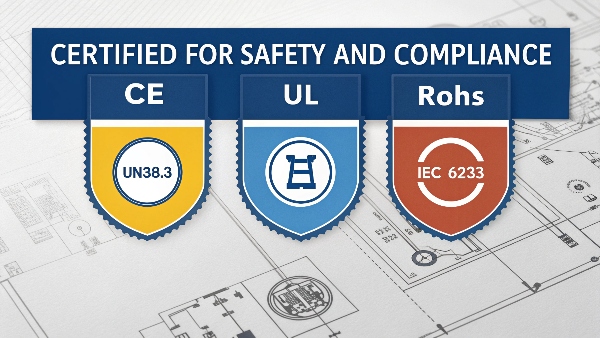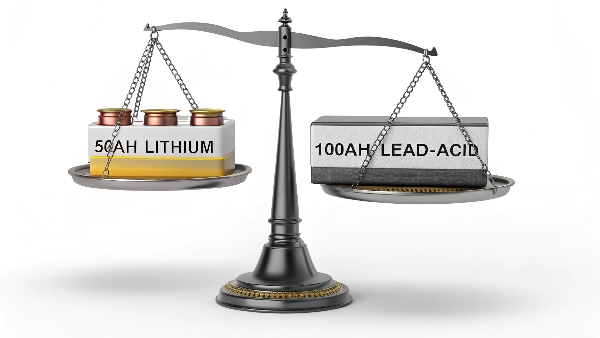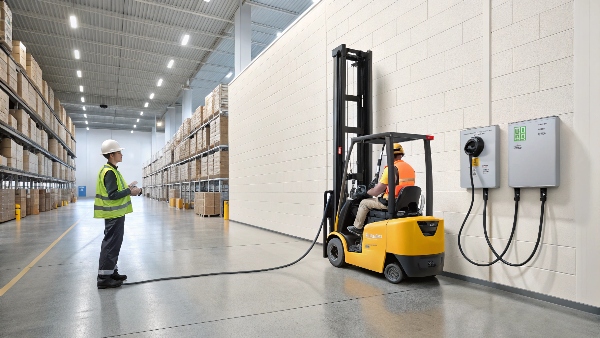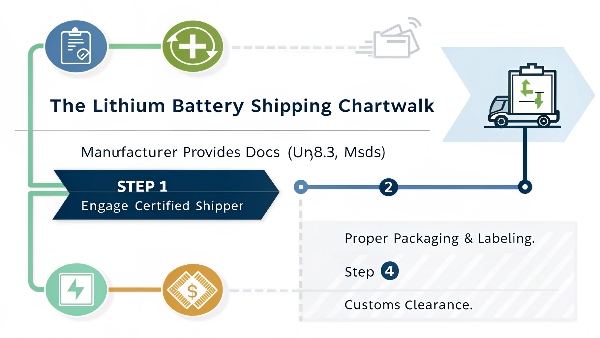Your motorcycle won't start. You have a UPS battery nearby and think it might work. This is a very common idea, but it's a recipe for disaster.
No, you absolutely cannot. A UPS battery is designed for low, steady power output, not the massive, instant jolt needed to start an engine. Attempting this will likely destroy the battery and create a serious fire risk.

Transition Paragraph:
In my ten years as an OEM/ODM manufacturer at Daopulse, I've learned that every power component has a specific job. You can't just swap them around. This brings me to a key point I often discuss with clients like Mr. Li, who manage large-scale projects. Lithium battery transportation generally has special requirements for product packaging. As long as the packaging is qualified, it can be shipped by sea or by air. Just like a battery has a specific use, it also has specific rules for how it's handled and shipped. Let's look at some of these specialized requirements.
What Are Safety Certifications Needed for Lithium Batteries?
You need to source lithium batteries for a critical project. How do you verify they are safe? Choosing an uncertified product is a risk you can't afford to take.
The most critical safety certifications are UN38.3 for transport safety and IEC 62133 for general use. For market access, CE for Europe and UL for North America are also essential. These prove the battery is professionally designed and tested.

Dive deeper Paragraph:
For a procurement manager, certifications are not just paperwork; they are your primary shield against risk. Let's break down the most important ones. UN38.3 is a mandatory global standard for transporting lithium batteries by air, sea, or land. It involves a series of brutal tests, including altitude simulation, thermal cycling, vibration, and short-circuit tests. We provide a UN38.3 test summary for every battery we produce. Then there's IEC 62133, which is the key international standard for the safety of the battery itself during normal use. It covers things like overcharging and forced internal shorts. Beyond these, market-specific certifications like CE and RoHS are necessary to sell products in Europe. When we partner with a client, we provide a full documentation package. This gives them complete confidence that the product is not only effective but also compliant and safe for their end users and international shipping.
Is a 50Ah Lithium Battery Better Than a 100Ah Lead Battery?
You see a 100Ah lead-acid battery and a 50Ah lithium battery. The lead-acid number looks bigger and better. This simple comparison can lead you to make the wrong choice.
Yes, in almost every practical way. A 50Ah LiFePO4 lithium battery provides almost the same usable energy as a 100Ah lead-acid battery. It's also lighter, safer, and lasts up to ten times longer, offering a much lower total cost.

Dive deeper Paragraph:
This is one of the most important concepts to understand when upgrading from old technology. The key is "usable capacity." A lead-acid battery's lifespan is drastically shortened if you discharge it more than 50%. So, a 100Ah lead-acid battery only gives you about 50Ah of usable energy. If you drain it more, you will damage it permanently. In contrast, a Lithium Iron Phosphate (LiFePO4) battery can be safely discharged to 90% or even 100% of its capacity without harm. This means a 50Ah lithium battery gives you 45-50Ah of real-world energy. They provide the same performance in a package that is smaller, lighter, and lasts for thousands of cycles instead of just a few hundred. This is why when we design a system, we focus on the client's real energy needs, not just the number on the label.
| Feature | 100Ah Lead-Acid | 50Ah LiFePO4 Lithium |
|---|---|---|
| Rated Capacity | 100 Ah | 50 Ah |
| Usable Capacity (DoD) | ~50 Ah (at 50% DoD) | ~45 Ah (at 90% DoD) |
| Cycle Life | 300-500 Cycles | 3,000-5,000+ Cycles |
| Weight | ~27 kg (60 lbs) | ~6 kg (13 lbs) |
| Maintenance | Required | None |
How to Choose a Forklift Lithium Battery?
Your forklifts are a key part of your operation. Their lead-acid batteries cause constant downtime for charging, swapping, and maintenance. This lost time is costing your business money.
Choose a forklift lithium battery by matching the voltage and capacity (Ah) to your forklift's needs. Most importantly, select a battery with a robust BMS designed for high-current discharge and a supplier who understands your specific operational demands.

Dive deeper Paragraph:
Upgrading a forklift fleet to lithium is a major efficiency project. It's not just about swapping one box for another. The first step is to match the core specifications: voltage (e.g., 48V), capacity (Ah), and the physical size to ensure it fits the forklift's battery compartment. But the most critical part is the Battery Management System (BMS)1. A forklift draws a huge amount of current, so the BMS must be powerful enough to handle these high loads safely. It also enables a key feature: opportunity charging2. This means you can plug the forklift in during a 15-minute coffee break to top up the charge, eliminating the need for battery swapping. As an OEM, we work with clients to understand their shift patterns and workload. This allows us to recommend or design a battery solution that maximizes uptime and completely transforms their operational workflow, paying for itself in increased productivity.
How to Ship a Lithium Battery From a Supplier?
You've ordered lithium batteries from an overseas supplier. Now you have to get them home. The shipping regulations seem like a complex maze designed to trap your products in customs.
To ship a lithium battery, your supplier must provide all safety documents (UN38.3, MSDS). Then, you must use a freight forwarder certified in Dangerous Goods to ensure correct packaging, labeling, and declarations for sea or air transport.

Dive deeper Paragraph:
This process is something we handle every day for our global clients. It's all about a chain of responsibility. As the manufacturer, our job is to provide the core proof of safety. This includes the UN38.3 test report and the Material Safety Data Sheet (MSDS). These documents are the passport for the battery. Once you have these, you engage a freight forwarder who specializes in Dangerous Goods (DG). They are the experts who will execute the shipment. They will use the documents we provide to:
- Formally classify the shipment.
- Package the batteries in UN-rated boxes with the correct internal protection.
- Apply all the necessary hazard labels.
- Complete the legal document called the Shipper's Declaration for Dangerous Goods.
This partnership between a prepared manufacturer and a competent shipper is the key. It turns a complicated process into a standard, reliable procedure, ensuring your valuable assets arrive safely and on time.
Conclusion
Always use batteries for their intended purpose; a UPS battery is not for a vehicle. For all applications, choose certified batteries and use expert partners for shipping to ensure safety and compliance.

